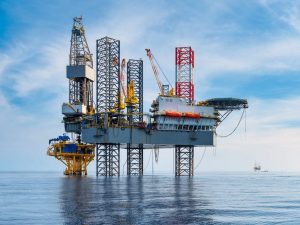As the price of oil rises to $85 per barrel, Nigeria will have to pay a higher subsidy.

Oil Rig
As the price of oil rises to $85 per barrel, Nigeria will have to pay a higher subsidy.
Advertisements

NewsReport gathered that as oil prices rose again yesterday, reaching a two-month high amid expectations that a lack of production capacity and restricted investment in the sector will push petroleum to between $90 and $100 per barrel this year.
Specifically, limited supply and easing fears over the potential impact of the Omicron on demand combined to drive up prices, with Brent selling for $85.04 a barrel yesterday and US West Texas Intermediate (WTI) crude futures rising to $82.90.
However, the news is both good and bad for Nigeria, which should normally earn more foreign cash from the sale of petroleum but now has to pay more for gasoline subsidies.
There is a positive relationship between the international prices of the commodity and the pump price of petrol in Nigeria.
On December 22, the National Assembly approved an N17.126 trillion ($38 billion) budget for 2022, anchored on an oil price benchmark of $62 per barrel.
The approved oil price assumption was higher than the $57 per barrel price that President Muhammadu Buhari had proposed to the parliament on October 7 and also higher than the oil price benchmark of $40 per barrel adopted by the government for the 2021 budget.
Nigeria retained the oil production target of 1.88 million BPD, including condensate production of between 300,000-400,000 BPD, for the purpose of its revenue calculation in 2022.
While oil exports account for about 80 percent of Nigeria’s foreign exchange revenue, the country has battled with a sharp drop in revenue amid a drop in crude oil production for months.
Potentially, Nigeria has the capacity to pump around 2.2 million BPD of crude and condensate, but in recent months its output has been weakened to below 1.55 million BPD.
The country’s crude oil production averaged 1.42 million BPD in November, according to an Organisation of Petroleum Exporting Countries (OPEC) survey. So, Nigeria has not been able to reap the expected gains since the country cannot meet its allocation.
Brent prices have not touched $90 and $100 since 2014 when they were retreating from a record high above $115 to as low as $57 by the end of the year.
The OPEC+ oil producers have continued to hold back more than three million barrels per day (BPD) in output, although it continues to raise output targets each month.
Meanwhile, the US Energy Information Administration (EIA) has upgraded its oil demand outlook, for the Short-Term Energy Outlook (STEO), saying that crude oil prices will fall from 2021 levels.
In the fourth quarter of 2021, the price of Brent crude oil, the international pricing benchmark, averaged $79 per barrel. “We forecast that the price of Brent will average $75 per barrel in 2022 and $68 per barrel in 2023,” the EIA stated.
The agency said it expects global petroleum production to increase by 5.5 million BPD in 2022, driven by production increases in the United States, OPEC, and Russia, which together account for 84 percent, or 4.6 million BPD, of the growth.
“We forecast increased tight oil production in the United States and gradually increasing crude oil production from OPEC+ (which includes OPEC members and Russia) will account for most of the increased crude oil production,” it added.
According to the organization, global petroleum consumption will increase by 3.6 million BPD in 2022, driven by more consumption in the United States and China, which together account for 39 percent of the consumption growth.
Also, Morgan Stanley in a note, stated that with the prospect of depleting crude inventories and low spare capacity by the second half of 2022, and limited investments in the oil and gas sector, the market will have little margin of safety.
In the same vein, JPMorgan analysts said Wednesday that they could see oil prices rising by up to $30 after the EIA lowered OPEC capacity estimates for 2022 by 0.8 million barrels per day (BPD) and 1.2 million BPD respectively.
The bank added that it also expects oil prices to “overshoot” to $125 a barrel this year, and $150 in 2023.
In the same vein, Rystad Energy’s said if OPEC was disciplined and wanted to keep the market tight, it could boost prices to $100.
But the Omani Oil Minister, Mohammed Al Rumhi, has agreed with the Group Managing Director of the Nigerian National Petroleum Company (NNPC), Mallam Mele Kyari that oil at $100 may be bad for the market. “The world is not ready for that,” Al Rumhi was quoted as saying by Bloomberg.
Kyari had said that the commodity at $50 to $60 was good for Nigeria, so as not to compel its customers to begin the search for alternatives.
Standard Chartered, meanwhile, has raised its 2022 Brent forecast by $8 to $75 a barrel and its 2023 Brent forecast by $17 to $77.